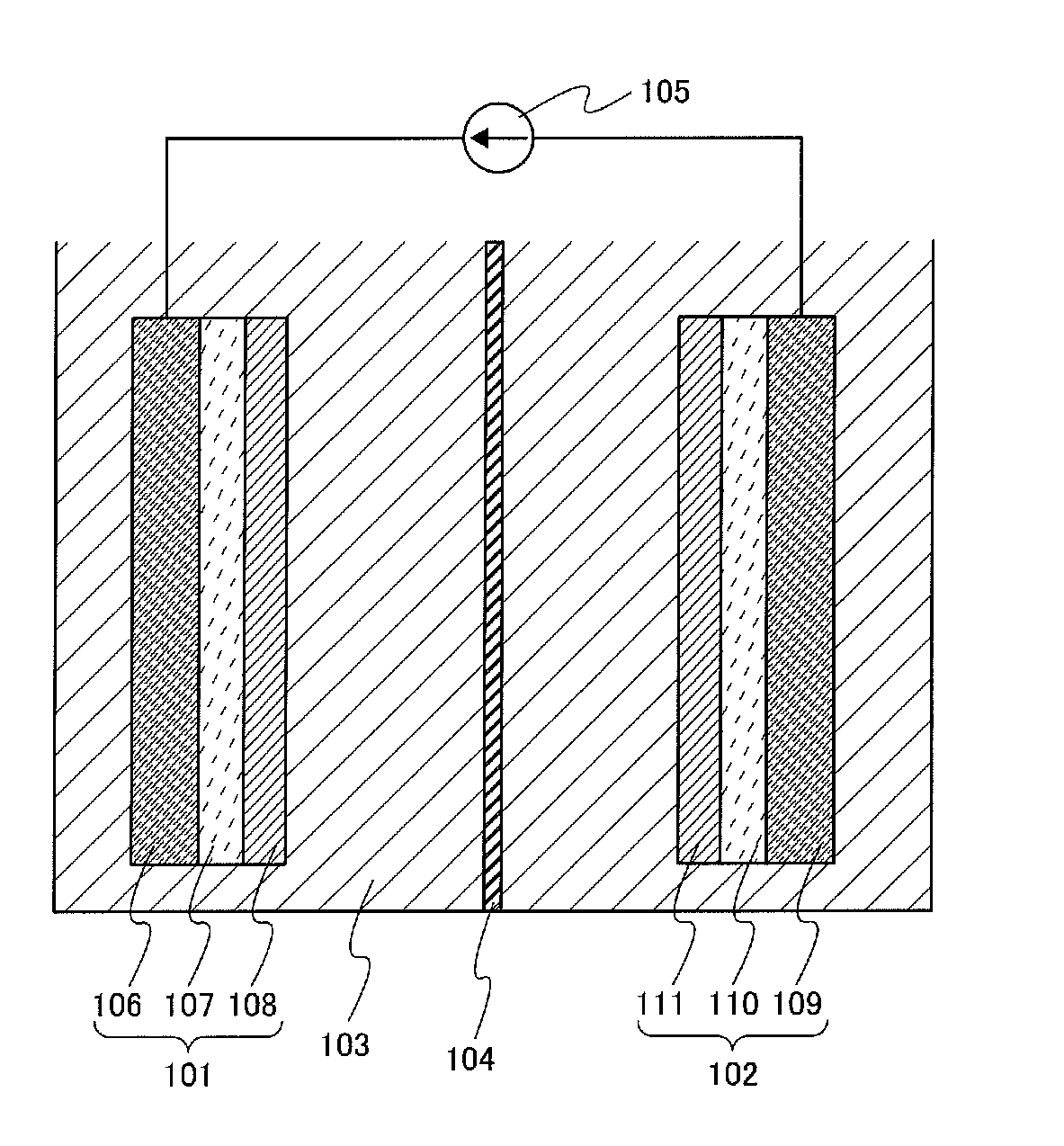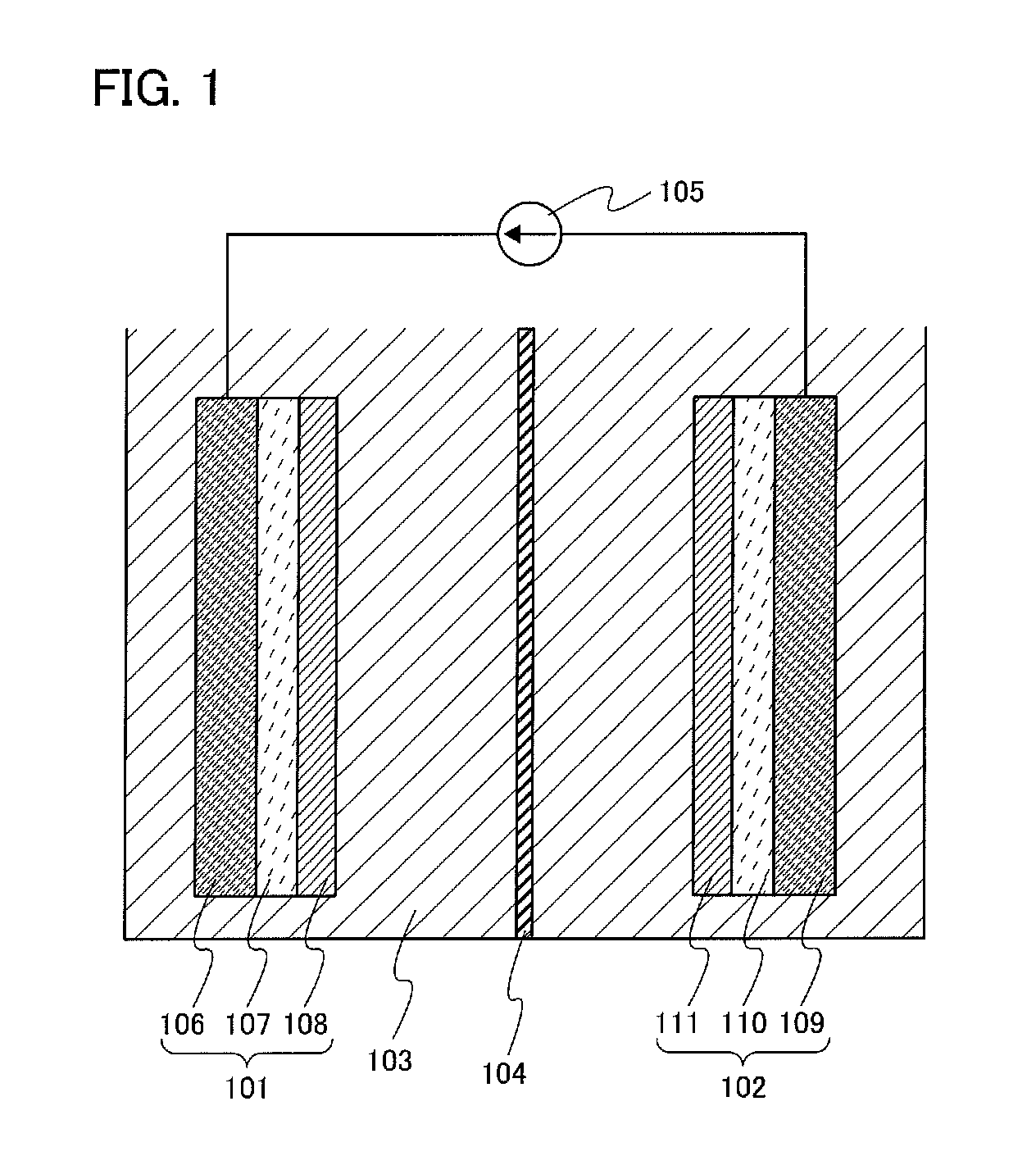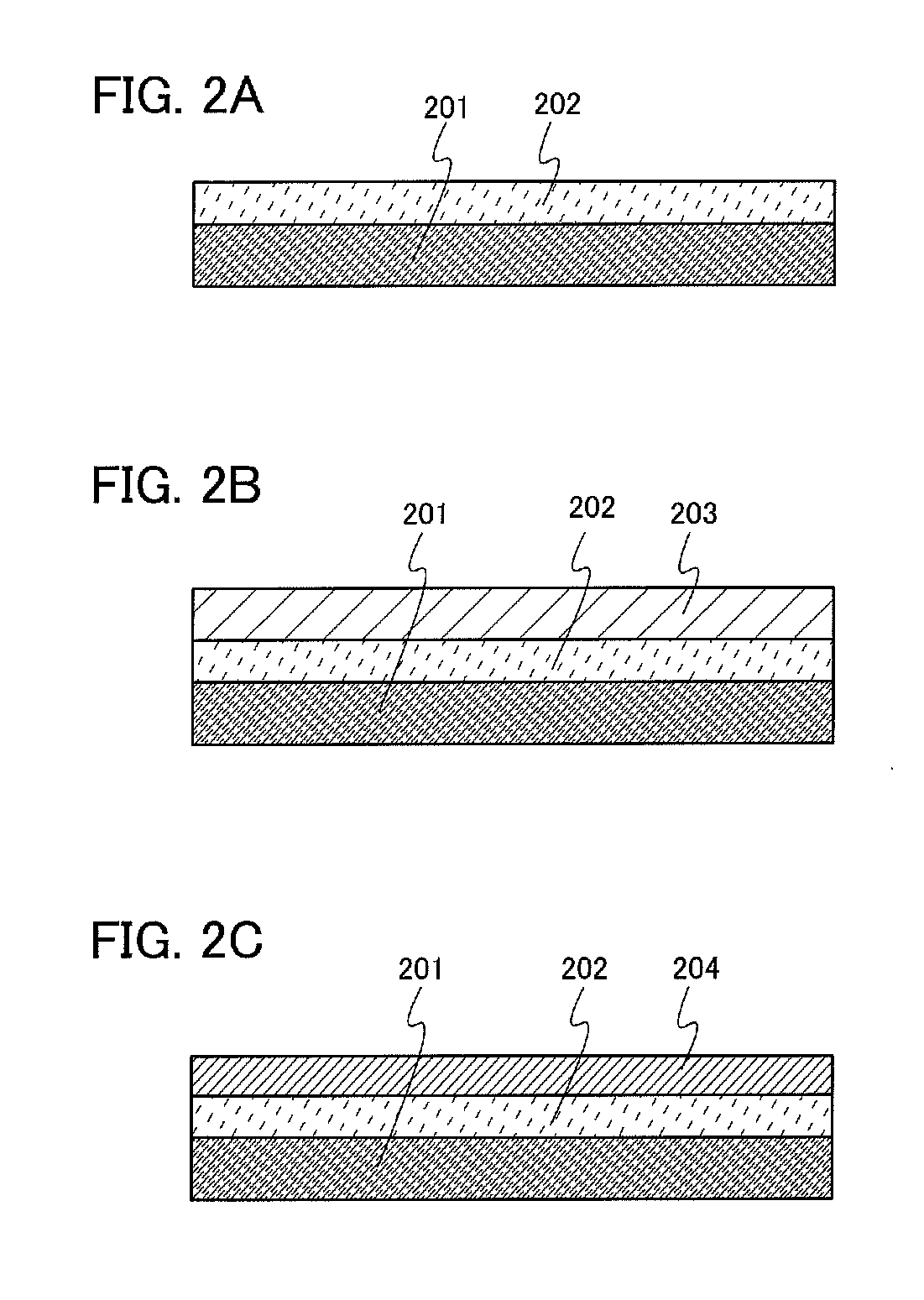Capacitor
a capacitor and hybrid technology, applied in the field of hybrid capacitors, can solve the problem that the polarizable electrode layer easily peels away from the current collector, and achieve the effects of ensuring bonding strength, preventing the peeling of the polarizable electrode layer from the current collector, and improving energy density
- Summary
- Abstract
- Description
- Claims
- Application Information
AI Technical Summary
Benefits of technology
Problems solved by technology
Method used
Image
Examples
embodiment 1
[0023]According to an embodiment of the present invention, a structure of an electric double layer capacitor with reference to FIG. 1 is described. The capacitor shown in FIG. 1 includes an electrode 101 and an electrode 102 which oppose each other with a separator 104 sandwiched therebetween in an electrolyte solution 103. The electrode 101 has a current collector 106, a buffer layer 107 in contact with the current collector 106, and a polarizable electrode layer 108 in contact with the buffer layer 107. The buffer layer 107 is provided between the current collector 106 and the polarizable electrode layer 108. In a similar manner, the electrode 102 has a current collector 109, a buffer layer 110 in contact with the current collector 109, and a polarizable electrode layer 111 in contact with the buffer layer 110. The buffer layer 110 is provided between the current collector 109 and the polarizable electrode layer 111. Also, the polarizable electrode layer 108 and the polarizable el...
embodiment 2
[0043]According to an embodiment of the present invention, a structure of a lithium ion capacitor with reference to FIG. 3 is described. The capacitor shown in FIG. 3 includes an electrode 301 and an electrode 302 which oppose each other with a separator 304 sandwiched therebetween in an electrolyte solution 303. The electrode 301 has a current collector 306, a buffer layer 307 in contact with the current collector 306, and a polarizable electrode layer 308 in contact with the buffer layer 307. The buffer layer 307 is provided between the current collector 306 and the polarizable electrode layer 308. In a similar manner, the electrode 302 has a current collector 309, a buffer layer 310 in contact with the current collector 309, and a polarizable electrode layer 311 in contact with the buffer layer 310. The buffer layer 310 is provided between the current collector 309 and the polarizable electrode layer 311. Also, the polarizable electrode layer 308 and the polarizable electrode lay...
embodiment 3
[0064]In this embodiment, a method of manufacturing an electrode included in a capacitor according to an embodiment of the present invention is described.
[0065]First, a buffer layer 202 is formed on the current collector 201 as shown in FIG. 2A.
[0066]The specific examples of the current collector 106 and the current collector 109 described in Embodiment 1 can be used for the current collector 201. In this embodiment, an aluminum foil can be used as the current collector 201.
[0067]The buffer layer 202, as described in Embodiment 1, includes a ratio of 60 wt % to 90 wt %, preferably 70 wt % to 80 wt %, of a carbon nanofiber or a carbon nanotube. Further, other than the carbon nanofiber and the carbon nanotube, the buffer layer 202 includes a resin which functions as a binder.
[0068]In this embodiment, by mixing VGCF (registered trademark) manufactured by Showa Denko K.K. which is a gas-phase method carbon fiber, with polyvinylidene fluoride (PVDF) which functions as a binder, and N-met...
PUM
| Property | Measurement | Unit |
|---|---|---|
| capacitance | aaaaa | aaaaa |
| diameter | aaaaa | aaaaa |
| length | aaaaa | aaaaa |
Abstract
Description
Claims
Application Information
 Login to View More
Login to View More - R&D
- Intellectual Property
- Life Sciences
- Materials
- Tech Scout
- Unparalleled Data Quality
- Higher Quality Content
- 60% Fewer Hallucinations
Browse by: Latest US Patents, China's latest patents, Technical Efficacy Thesaurus, Application Domain, Technology Topic, Popular Technical Reports.
© 2025 PatSnap. All rights reserved.Legal|Privacy policy|Modern Slavery Act Transparency Statement|Sitemap|About US| Contact US: help@patsnap.com



